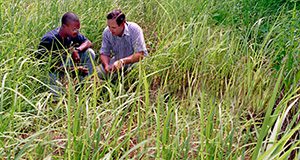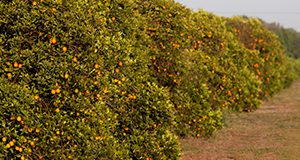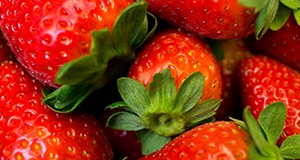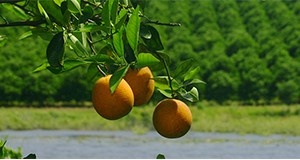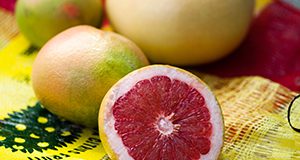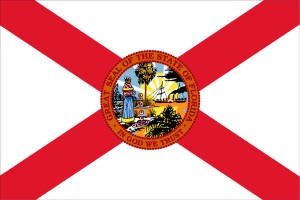Maevia inclemens is a common jumping spider found in vines and ivy along tree lines throughout eastern North America. Learn about this interesting and possibly agriculturally beneficial spider in this 3-page fact sheet written by Laurel Lietzenmayer and Lisa Taylor and published by the UF/IFAS Department of Entomology and Nematology.
http://edis.ifas.ufl.edu/in1209
Author: Susan Gildersleeve
Dark Southern Drywood Termite (suggested common name) Kalotermes approximatus Snyder (Insecta: Isoptera: Kalotermitidae)
Dark southern drywood termites are classified as “an uncommon structural pest,” though some infestations have been recorded. Learn to identify this termite species and get information about its distribution, history, biology, and management in this 5-page fact sheet written by Joseph F. Velenovsky and Rudolf H. Scheffrahn and published by the UF/IFAS Department of Entomology and Nematology.
http://edis.ifas.ufl.edu/in1208
The H-2A Program and Immigration Reform in the United States
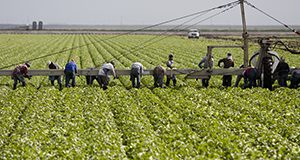
The Immigration and Nationality Act (INA) of 1952 authorized a nonimmigrant visa category, known as H-2, for foreign agricultural and nonagricultural workers to come to the United States and perform temporary services. To protect against disruptions in the farm labor supply, many growers are turning to the H-2A program to import foreign guest workers. This 5-page fact sheet written by Berdikul Qushim, Zhengfei Guan, and Fritz M. Roka and published by the UF/IFAS Food and Resource Economics Department explains the H-2A program and briefly discusses immigration reform.
http://edis.ifas.ufl.edu/fe1029
An Overview of the US Bell Pepper Industry

Bell pepper is one of the most widely cultivated vegetable crops in the world; it is widely grown all over the United States, and production of bell pepper has been a major economic contribution to the vegetable industry in Florida and California. This 4-page fact sheet written by Trina Biswas, Zhengfei Guan, and Feng Wu and published by the UF/IFAS Food and Resource Economics Department provides an overview of the US bell pepper industry, including production, prices, and trade.
http://edis.ifas.ufl.edu/fe1028
The US Tomato Industry: An Overview of Production and Trade
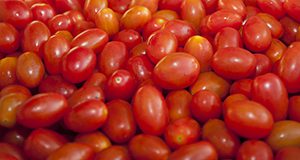
Tomatoes are one of the world's most consumed vegetable crops. In the United States, domestic production meets about 40% of the total domestic demand for fresh-market tomatoes, with the rest of the demand met by imports, mostly from Mexico and Canada. Since 2000, however, fresh tomato production in the United States has exhibited a steady declining trend. One major reason is the increased competition from Mexico. This 4-page fact sheet written by Zhengfei guan, Trina Biswas, and Feng Wu and published by the UF/IFAS Food and Resource Economics Department argues for US government measures to help the domestic tomato industry resolve labor shortages and encourage research and development of labor-saving technologies such as mechanical harvesting to make the US tomato industry more competitive and sustainable.
http://edis.ifas.ufl.edu/fe1027
Labor Requirements and Costs for Harvesting Tomatoes
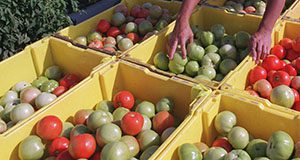
Florida accounts for 30% to 40% of all commercially produced fresh-market tomatoes in the United States. Almost every southern county in the state grows tomatoes. This 4-page fact sheet written by Zhengfei Guan, Feng Wu, and Steven Sargent and published by the UF/IFAS Food and Resource Economics Department presents the results of a 2015 study that examined the time it takes to harvest this important crop.
http://edis.ifas.ufl.edu/fe1026
Tomato Suspension Agreements and the Effects on Market Prices and Farm Revenue
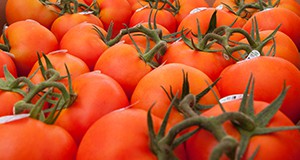
The production capacity of the US tomato industry has decreased significantly in the past decade. The US Department of Commerce and the Mexican tomato industry negotiated and signed several Suspension Agreements that set floor prices for imported Mexican fresh tomatoes to protect the US domestic industry. This 4-page article written by Zhengfei Guan, Dong Hee Suh, and Feng Wu and published by the UF/IFAS Food and Resource Economics Department provides a review of the history of the suspension agreements and an analysis of their effects on the US tomato industry.
http://edis.ifas.ufl.edu/fe1025
Streamlining Resiliency: Regulatory Considerations in Permitting Small-Scale Living Shorelines in Florida
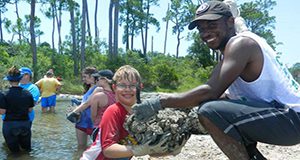
Living shorelines offer a valuable and environmentally friendly means of stabilizing shorelines while restoring and enhancing estuarine habitats. Because living shorelines are considered environmentally beneficial, several agencies have coordinated efforts to reduce the regulatory burden required to construct them. This 8-page fact sheet written by Thomas T. Ankersen, Alexandra Barshel, and Valerie Chesnut and published by the Florida Sea Grant College Program, UF/IFAS Extension, describes how to ensure that a living shoreline project will be successful and not run into any permitting difficulties.
http://edis.ifas.ufl.edu/sg155
Managing High Water Levels in Florida's Largest Lake: Lake Okeechobee
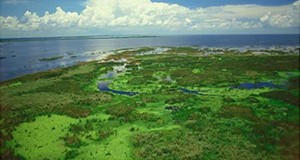
This 7-page fact sheet written by Karl E. Havens and published by the Florida Sea Grant College Program, UF/IFAS Extension, provides a history of Lake Okeechobee regulation schedules and an overview of the risks, constraints, and trade-offs that the US Army Corps of Engineers must consider when deciding to release flood water from the lake.
http://edis.ifas.ufl.edu/sg154
Biology and Control of Cogongrass (Imperata cylindrica) in Southern Forests
Cogongrass (Imperata cylindrica (L.) Beauv.) is a Southeast Asian warm-season perennial grass species that has spread to all continents except Antarctica. It is considered among the worst problematic weeds on a global scale. Control of cogongrass is difficult, especially in forests. This 6-page fact sheet written by Patrick J. Minogue, Brent V. Brodbeck, and James H. Miller and published by the UF/IFAS School of Forest Resources and Conservation presents recommendations for control strategies that will work in mixed pine-hardwood forests and pine forests.
http://edis.ifas.ufl.edu/fr411
Economic Contributions of the Florida Citrus Industry in 2015/16
This 2-page fact sheet written by Christa D. Court, Alan W. Hodges, Mohammad Rahmani, and Thomas H. Spreen and published by the UF/IFAS Food and Resource Economics Department describes the economic contributions of the citrus industry to the state of Florida in fiscal year 2015/16, updating previous studies for 2012/13 and 2014/15 and previous estimates for the economic impacts of citrus greening disease.
edis.ifas.ufl.edu/fe1021
Living with the African Honey Bee
African honey bees and European honey bees are the same species of honey bee, but the two are classified as different subspecies or races of honey bee. African honey bee x European honey bee hybrids present an unpredictable combination of both subspecies‹ behavioral traits. This 4-page fact sheet written by J. D. Ellis and M. Bammer and published by the UF/IFAS Department of Entomology and Nematology explains how to “bee-proof” your house and yard and develop a bee safety plan as well as what you can do if you encounter a swarm or a colony of bees and how to treat a bee sting.
edis.ifas.ufl.edu/in1205
Swimmer's Itch (Cercarial Dermatitis)
Learn how to swim safely and avoid this itchy skin rash in this 3-page document written by Emma N. I. Weeks and Katherine Sayler and published by the UF/IFAS Department of Entomology and Nematology.
http://edis.ifas.ufl.edu/in1200
Florida Strawberry Growers Need More Early Yield to Improve Profitability
Fresh strawberries are a major US fruit crop. This 3-page fact sheet written by Feng Wu, Zhengfei Guan, and Vance Whitaker and published by the UF/IFAS Food and Resource Economics Department summarizes recent research on strawberry yield patterns and how they are predicted to affect profits. It is intended primarily for those involved in Extension, marketing, policy-making, production, and research related to the Florida strawberry industry. We believe that a better understanding of yield and price dynamics will be valuable to industry decision-makers.
http://edis.ifas.ufl.edu/fe1032
Nutrition for Health and Fitness: Sodium in Your Diet

The foods you eat and the way you prepare and serve them affect the amount of sodium in your diet. This 5-page fact sheet Written by Linda B. Bobroff, and published by the UF/IFAS Department of Family, Youth and Community Sciences will help you evaluate your sodium intake.
edis.ifas.ufl.edu/he696
Cost of Production for Processed Oranges in Southwest Florida, 2016/17
This 5-page fact sheet written by Ariel Singerman and published by the UF/IFAS Food and Resource Economics Department summarizes the cost of production per acre for processed oranges grown in southwest Florida during the 2016/17 season. Typical users of the estimates include growers and consultants, who use them as a benchmark; property appraisers, who use them to compute the taxes for property owners; and researchers, who use the estimates to evaluate the economic feasibility of potential new technologies.
http://edis.ifas.ufl.edu/fe1038
Cost of Production for Fresh Market Grapefruit Grown in Indian River, Florida 2016/17
This 5-page fact sheet written by Ariel Singerman and published by the UF/IFAS Food and Resource Economics Department presents the cost of production per acre for growing fresh grapefruit in the Indian River region during 2016/17. Typical users of the estimates include growers and consultants, who use them as a benchmark; property appraisers, who use them to compute the taxes for property owners; and researchers, who use the estimates to evaluate the economic feasibility of potential new technologies.
http://edis.ifas.ufl.edu/fe1037
Budget Template for Home Canning
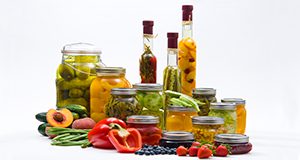
One in five US households cans fruits or vegetables in a home kitchen. If your household is one of them, you may want to know the full cost of the activity or how much money you are saving by doing it yourself. This 10-page fact sheet written by Kevin R. Athearn, Amarat Simonne, and Soohyoun Ahn and published by the UF/IFAS Food and Resource Economics Department presents a template designed to assist you in estimating the cost and potential returns from canning food at home.
http://edis.ifas.ufl.edu/fe1034
Cost Estimates of Producing Sapodilla in South Florida, 2017
This 6-page fact sheet written by Edward A. Evans, Fredy H. Ballen, Aditya Singh, and Jonathan H. Crane and published by the UF/IFAS Food and Resource Economics Department provides an estimate of the costs and returns associated with an established sapodilla orchard in south Florida. The information presented is based on a wide range of production practices collected through field interviews with growers and industry specialists and is intended as a guide to estimate the financial aspects of operating an established sapodilla grove. Please note that sapodilla has been assessed by the UF/IFAS Invasive Plants Working Group as potentially invasive in south and central Florida. It should not be planted in home landscapes or in groves near natural areas. Sapodilla plantings must be fenced, and the fruit must be moved in covered vehicles to prevent fruit being eaten by wildlife and the plant from infesting areas outside the grove.
http://edis.ifas.ufl.edu/fe1015
Public Policy Issues in Florida: 2017-18 Constitution Revision Commission (CRC)
It is an exciting time in Florida public policy; the once-in-every-two-decades Constitution Revision Commission is in the process of recommending changes to the Florida state constitution. This 4-page fact sheet written by Rodney L. Clouser and published by the UF/IFAS Food and Resource Economics Department describes the process and explains how to get involved, evaluate the proposals for changes to the constitution, and cast an informed vote in November 2018.
http://edis.ifas.ufl.edu/fe1035


